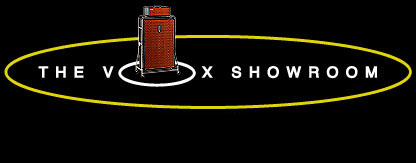
 When you pull out the five white "voicing" drawbars on the upper keyboard of the Super Conetinental, and play the lowest, or "C1" key in the illustration
above, the resultant sound will be composed of these eight distinct pitched
tones. This same eight tone relationship explains how the Vox Super Continental
developed even a more Hammond like tone than other 1960's combo organs.

When you pull out the four white "voicing" drawbars on the lower keyboard of the
Vox Super Continental Oragn, and play the lowest, or "C1" key in the illustration
above, the resultant sound will be composed of these seven distinct pitched tones.
|
The drawbars on Continental Organs are used for voicing and tone control and are based on the operation of a pipe organ.
The concept of drawbars for voicing control was originally developed by Hammond Organ in the 1940s. Hammond organs used 9 drawbars that controlled the volume of nine different electronically simulated organ pipe lengths. From left to right, these drawbars were connected to tone generators inside the organ that operated the simulated pipe lengths of 16', 5 1/3', 8', 4', 2 2/3', 2',1 3/5', 1 1/3' and 1'
The original 1962 design Vox single Continental drawbar system borrowed heavily from Hammond. On the single Continental, the left four drawbars are labeled 16', 8', 4' and IV. As on a Hammond organ, these voicing drawbars act as volume controls for the sound of the electronically simulated pipe organ lengths they control. The Vox Continental drawbars are connected to the output of the serial dividers on the tone generator cards through the key contacts.
The lower keyboard of the dual manual Super Continental utilized this original "single" Continental drawbar system. The upper keyboard of the Super Continental inched even closer to the Hammond sound architecture by adding a fifth voicing drawbar and an additional Hammond harmonic tone.
How is this accomplished on the Super Continental? Like a Hammond organ, the Vox Super Continental has two sets of 16', 8", and 4' fundamental drawbars (the note generated is the same tone as the key played, or the "consonant" tone) and II, III, and IV Rank overtone drawbars (which are generally based on harmonically related thirds and fifths tones of the consonant.)
The sixth divider on the tone generator cards produce the lowest tones on the organ (click here for an explanation of the divider operation on the V303E tone generator cards). The output of the sixth, ot lowest divider on the tone generator card is roughly equivalent to the tone produced by a 16' pipe on a traditional pipe organ. In the lowest octave of the organ, the 16' "fundamental" drawbar is connected to the output of the sixth divider, adjusting its volume. The drawbar may be pulled out to make the tone louder and pushed in to make the tone softer. Again, in the lowest octave, the fifth divider on the tone generator card feeds the 8' "fundamental" drawbar, making a tone equivalent to an 8' pipe on a pipe organ and produces a tone one octave higher than the sixth divider. The same applies to the fourth divider and the 4' "fundamental" drawbar, which produces a tone two octaves higher than the sixth divider.
In the second octave, the 16' drawbar is connected to the fifth divider on the tone generator card. In the third octave, the 16' drawbar is connected to the fourth divider on the tone generator card. In the highest octave, the 16' drawbar will be connected to the third divider of the tone generator card. The similar scheme would apply to the connection of the 8' and 4' drawbars to the tone generator cards.
In addition to the "fundamental" 16', 8', and 4' tones, the lower keyboard has a IV Rank or "overtone" drawbar. The upper manual has II and III Rank "overtone" drawbars. These drawbars add the complex Hammond like harmonics to the tone of the Vox Continental series of organs.
|

